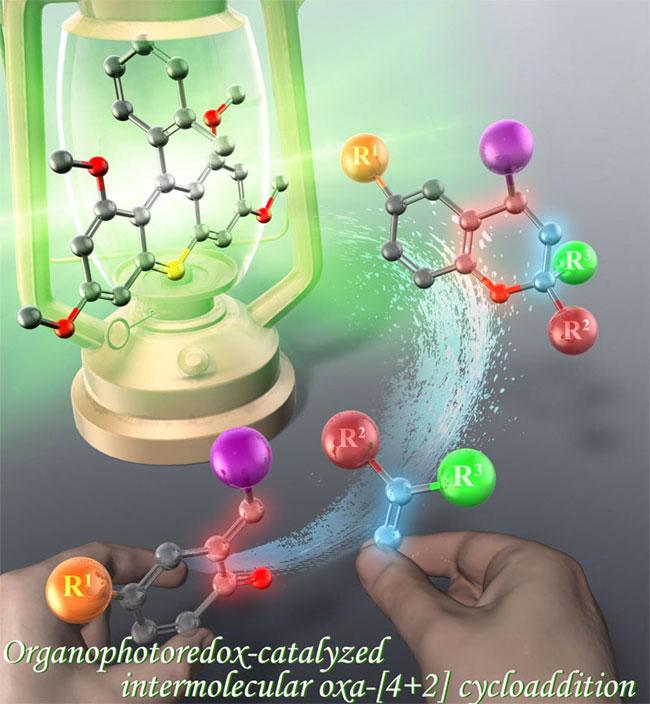
Using Green Light to Synthesize Organic Compounds
YOKOHAMA, Japan, Sept. 23, 2019 — A team from Yokohama National University has developed oxygen heterocycles using green light as a photocatalyst. Their sustainable approach to developing these compounds could help organic chemists develop better drugs.
Oxygen heterocycles are ring structures consisting of atoms from two or more elements. They have a variety of uses, including in medications to treat cancer and heart failure. According to professor Kiyoshi Honda, “[Our] goal was to develop cost-effective and milder synthetic routes to create oxygen heterocycles.”

The green-light-driven production of oxygen heterocycles. Courtesy of Yokohama National University.
Traditionally, oxygen heterocycles are made by applying high temperatures to two molecules. The process consumes time and energy, and doesn’t produce a significant number of heterocycles. The researchers used a method involving the design of photosensitive, carbon-based salts. They added the salts to two types of compounds, which form a ring once they react, and then irradiated the combination with green light.
“This reaction was particularly attractive because it can hold a high number of atoms and provides efficient access to various synthetically useful oxygen-containing heterocycles,” researcher Yujiro Hoshino said. “This reaction can also be carried out in mild experimental conditions — room temperature and visible light.”
The process used by the researchers produced a high yield of oxygen heterocycles. Hoshino believes the successful reaction occurred because of a structure on the salts called an electron-donating group, in which electrons are excited by green light, and the salts extract an electron from the compound to react with the other compound components.
Next, the researchers plan to experiment with different-colored light to drive various reactions. They are specifically interested in establishing a red-light reaction, which will be more difficult than the green-light one, according to Hoshino. Red light has a longer wavelength and lower frequency than green light, meaning it is closer to IR than to visible light on the spectrum. Red-light reactions could drive a higher production of heterocycles, but would also require greater accuracy and efficiency.
"Our next goal is to expand the scope of reaction,” Hoshino said. “We envision the expansion of the use of various visible-light-driven reactions in the future, and we plan to continue contributing to it.”
The research was published in the Journal of Organic Chemistry (https://doi.org/10.1021/acs.joc.9b01156).
Published: September 2019